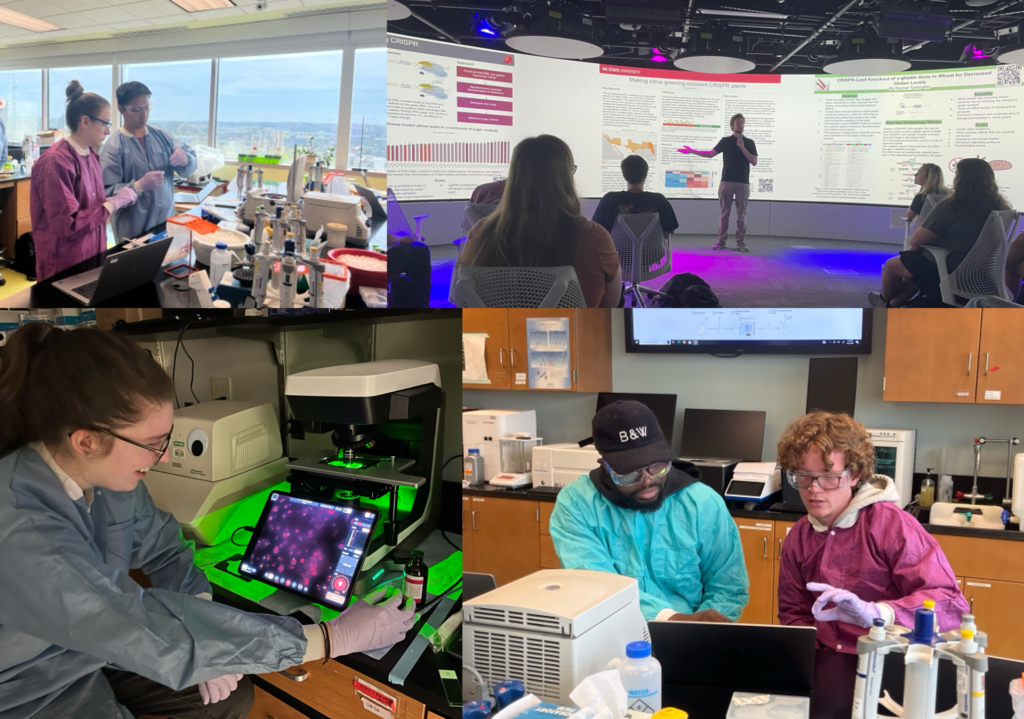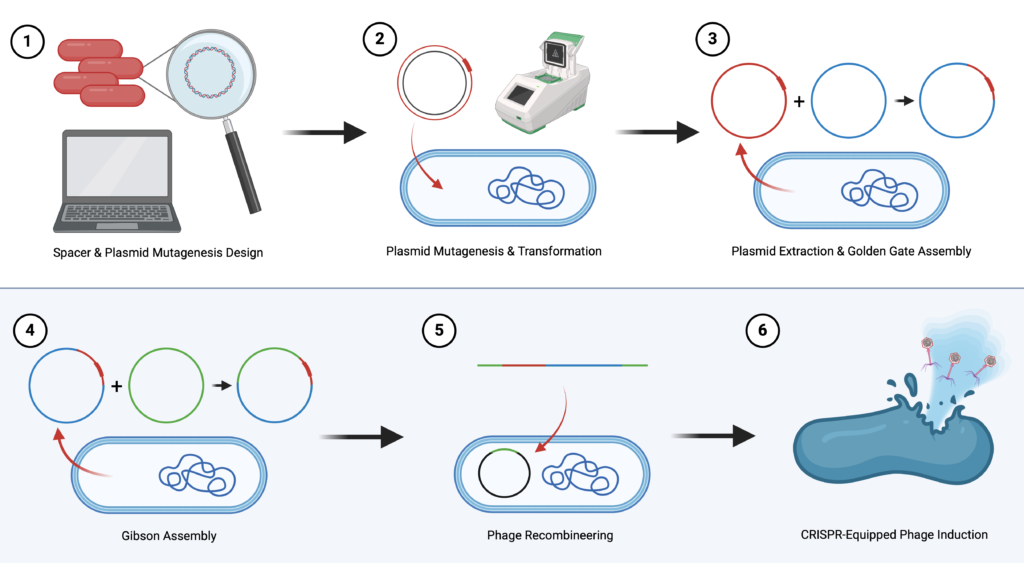BIT 495/595: Genome Engineering: CRISPR Technologies
Overview:
- Introduction to how CRISPR-Cas systems work, available tools and the application of these technologies.
- Students will work in teams to design and create a CRISPR-equipped bacteriophage as an alternative antimicrobial against Serratia marcescens.
- Students will communicate broad applications of CRISPR in group presentations as well as novel applications in individual poster presentations.

Course Learning Objectives:
CO 1. Compare and contrast the characteristics of native and engineered CRISPR-Cas systems.
CO 2. Design appropriate guide RNA sequences for a given gene editing scenario and justify design choices.
CO 3. Design and build a recombinant CRISPR-equipped bacteriophage for specific bacterial targeting.
CO 4. Integrate information from diverse sources to construct a unified and well-supported presentation.
CO 5. Articulate the core principles and diverse applications of CRISPR-Cas systems in a clear and compelling manner to a scientific audience.
CO 6. Analyze the ethical and scientific implications of genome editing, including potential benefits, risks, and societal concerns.
CO 7. (BIT 595 Students Only) Facilitate in-depth group discussions analyzing the experimental design and interpretation of data presented in figures from peer-reviewed publications.
Class Topics:

- Native CRISPR-Cas Systems
- DNA Repair Mechanisms
- Genetic Engineering with CRISPR
- Available Tools & Applications
- Bioethics of CRISPR
Lab Topics:
- Guide RNA Design
- Site-Directed Mutagenesis
- Golden Gate & Gibson Assembly
- Lambda Red Recombineering
- CRISPR-equipped bacteriophage
